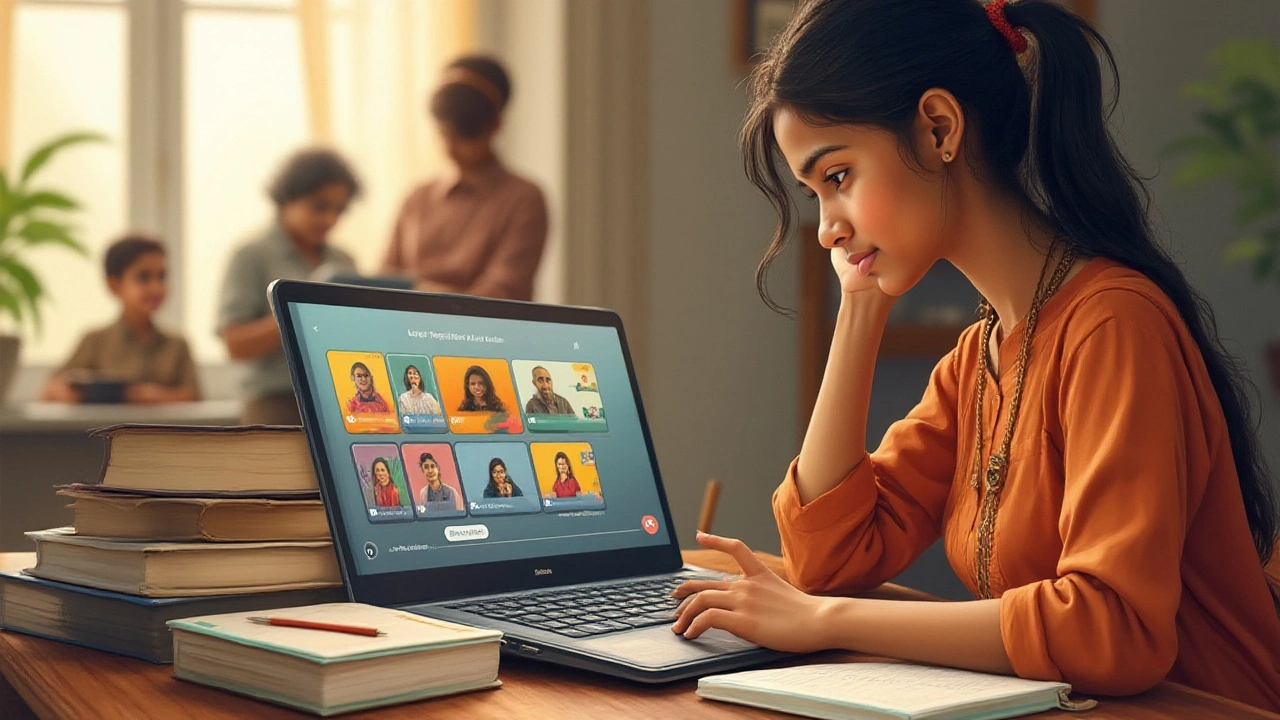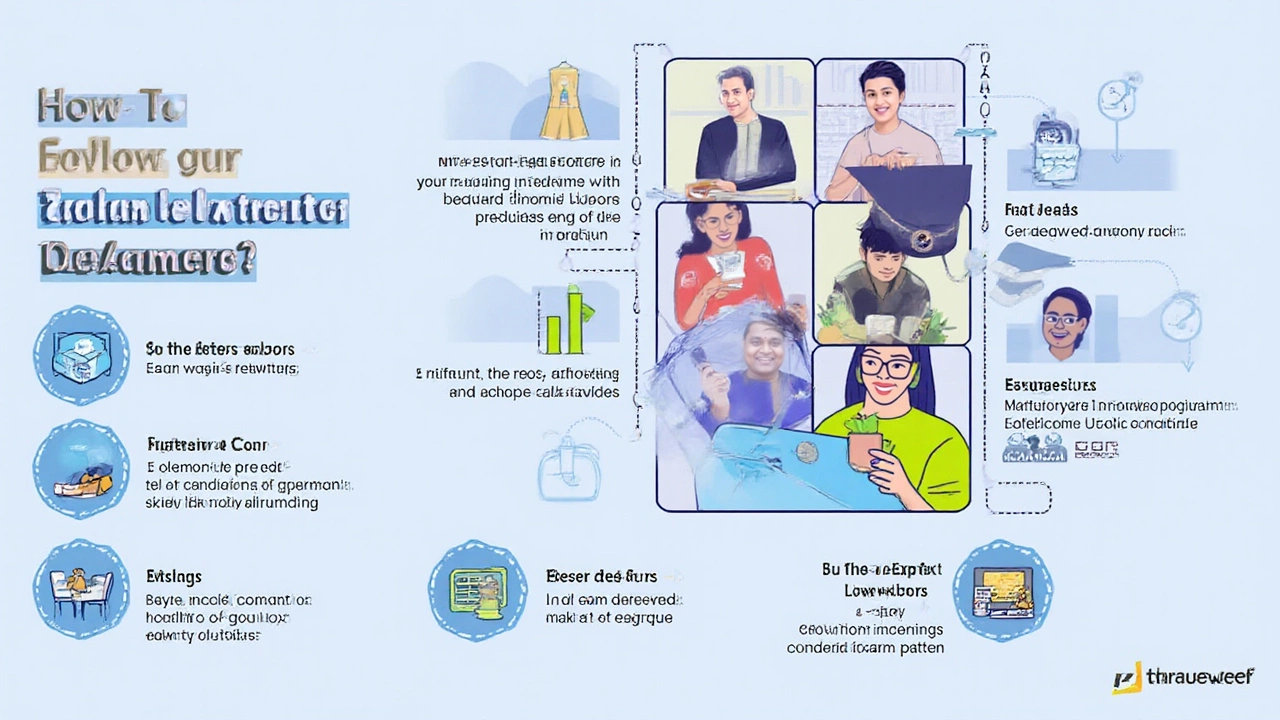Digital Learning Platforms: How Tech is Changing Modern Education

Remember the old days of chalkboards, heavy textbooks, and struggling to see what the teacher scribbled in the back row? Fast-forward to today, and you’ll spot students logging on from their bedrooms, busy professionals squeezing in a lesson during lunch, and schools customizing study plans for each kid—all thanks to digital learning platforms. This isn’t just software. It’s a complete rethink on how we absorb, test, and use information. And if you think it’s only about lectures on Zoom, you’re missing the wild transformation happening right under your nose.
What Makes a Digital Learning Platform?
Let’s break it down. A digital learning platform is an online space packed with tools and resources that allow students, teachers, and even companies to teach, learn, communicate, and track progress—no matter where anyone is. Instead of the old-school model where you report to a classroom at a fixed time every day, these platforms bring classrooms to your laptop, tablet, or phone. That’s more freedom, more flexibility, and surprisingly, more ways to personalize learning than ever before.
Platforms vary—from recognizable giants like Coursera, Khan Academy, and Udemy to specialized apps for yoga instruction, language learning, or coding. Most have a few things in common: bite-sized lessons, quizzes, forums, progress tracking, and interactive elements like polls and challenges. What’s cool is the variety. You’ll find platforms built for universities, schools, companies, and even just for casual learners brushing up job skills or trying out a new hobby.
The best platforms use clever algorithms to tailor the experience. Ever watched Netflix and seen a “Because you watched…” suggestion? Digital learning works the same way. If you breeze through algebra but choke on geometry, the platform might nudge you towards practice modules, video explainers, or interactive games until you’ve nailed those tricky angles. Some AI-driven platforms can even adjust questions on the fly for your skill level. It’s not about one-size-fits-all anymore—which is huge for people who learn at different paces.
Interactivity is key. Students can leave comments, join discussions, work on shared projects, and even challenge each other in real-time games or competitions. Teachers and moderators step in, but often, the community itself becomes a massive support system. That social connection can make remote learning a lot less lonely and boost motivation.
Let’s talk content. Tons of platforms house courses across everything from calculus to creative cooking. Some use video lectures, others use podcasts, digital textbooks, quizzes, simulations, or even virtual reality. Saxon School in the UK ran a pilot with VR history lessons, and students actually scored better on tests—maybe because walking around a virtual Colosseum beats staring at a flat photo in a book.
Security isn’t flashy but matters big time. Well-built platforms encrypt data, follow privacy laws, and make sure chatrooms and messages are monitored for bullying or weird behavior. And accessibility matters—platforms now support screen readers, voice commands, and translations, opening the door for people with disabilities or those learning in their second language.
| Feature | Benefits |
|---|---|
| Adaptive Learning | Custom lessons based on user’s strengths/weaknesses |
| Virtual Classrooms | Live interaction, Q&A, peer learning |
| Gamification | Keeps studying fun and increases motivation |
| Progress Tracking | Students and instructors can see growth in real time |
| Mobile Access | Learn anywhere, anytime—dead simple |
Here’s a tip: when picking a platform for you or your team, check for these features. If it doesn’t offer flexibility, interactive help, or progress tracking, you might end up frustrated or bored. The best ones balance content, support, and fun.

How Digital Learning Platforms Are Used
Digital learning platforms are everywhere, but how are people actually using them day-to-day? Let’s look past the marketing slogans and dive into what happens when real students, teachers, and companies put these platforms to work.
In schools, teachers are ditching the "one textbook fits all" method. Instead, they mix video lessons, online quizzes, and digital group work so kids can learn their way. For example, a biology teacher might set up an online experiment using a simulation tool—students mix chemicals virtually, see reactions instantly, and never worry about flooding the lab. Platforms like Google Classroom or Edmodo are used for sharing assignments and giving feedback. Since COVID, even the most reluctant schools have jumped on board, with over 95% of US schools adopting some kind of blended or digital learning (according to a Pew Research report).
At the college level, it’s a game-changer for those living off-campus, working full-time, or needing a more flexible schedule. Take MIT OpenCourseWare: you can watch MIT lectures, try problem sets, and access readings—no Boston campus visit required. Coursera and edX even partner with top universities, letting anyone enroll in real, credit-earning classes for a fraction of traditional tuition.
Job training is another huge piece. Companies don’t want to pull teams away for stuffy day-long seminars. Instead, they use platforms like Udemy for Business or LinkedIn Learning. Your boss can assign a cybersecurity course, track who finished the modules, and even hand out digital certificates. It’s fast, up-to-date, and easy to fit into a busy workweek. According to LinkedIn’s Workplace Learning Report (2024), more than 70% of companies now use digital platforms for employee upskilling and compliance training. It’s literally keeping entire industries afloat with fewer costs and less disruption.
But it’s not just about the professional stuff. Self-learners are using apps like Duolingo for languages, Procreate tutorials for digital art, even yoga and meditation classes on platforms like Glo. The platforms are global, too. Someone in rural India might learn advanced coding from a developer in Seattle, then put that skill to use freelancing online. Education is less limited by geography or money—you just need a connection and a device.
Don’t forget public and social impact uses. Digital learning platforms support education in crisis zones—think about refugees learning in remote camps using donated tablets, or kids stuck at home due to natural disasters. They’re breaking down walls that used to keep people out of learning.
Of course, there are challenges. Internet access isn’t universal. Some families struggle with device costs or fail to find quiet enough space at home. And, yes, "Zoom fatigue" is very real. Tech can’t replace good teaching, but it can make great instruction more available, interactive, and fun.
One tip: set daily reminders and goals in your digital learning app. It’s easy to fall off the bandwagon with self-paced courses. Platforms that allow you to track streaks, earn badges, or team up with a buddy see more users finishing their courses.

Trends, Stats, and the Future of Digital Learning Platforms
Let’s look ahead. Digital learning platforms are not standing still—they’re evolving fast, shaped by the latest tech and the changes in how we work and live. If you blink, you might miss the next big leap.
The numbers are staggering. In 2024, the global e-learning market was valued at $399 billion (Statista). That’s up from $200 billion just five years ago. Why the jump? Growth in remote work, increasing demand for flexible learning, and a flood of new content from everywhere—schools, coaches, companies, government agencies. Apps are being downloaded by the millions, and now, nearly 60% of all students have used at least one digital platform for formal studies, according to UNESCO’s Digital Education Tracker.
So where’s all this heading? Artificial intelligence is making platforms smarter. Instead of mindless multiple-choice tests, users get personalized tasks. AI tutors can now answer questions any time of day or even explain a tough topic in a different way if you’re stuck. Chatbots are replacing basic tech support and even help with time management—nudging users to stick to their study plans. A 2025 survey found that Gen Z students are 3x more likely to complete an AI-guided module than a text-only unit.
Virtual and augmented reality are adding layers—students can explore a 3D heart to see blood flow or walk through ancient ruins in VR without leaving the classroom. Simulations make practical training safer and more scalable; for instance, medical students can practice diagnosing illnesses or engineers can tinker with virtual machinery. This isn’t sci-fi—it’s rolling out right now in schools and training centers around the world.
Another huge trend: microlearning. Instead of marathon three-hour lectures, lessons are broken into five- or ten-minute chunks. You can finish a lesson while waiting for coffee. Microlearning taps into how people really use their phones—on the go, in short bursts, every day—and makes sure learning fits around life, not the other way around. Platforms like Skillshare and Blinkist have built their entire brand on bite-sized education, and user numbers are booming.
Digital learning platforms are also becoming more global and social. Study groups meet online across time zones. Learners can follow influencers or experts, not just their own teachers. Translation and speech technology mean fewer barriers for people who don’t speak English fluently. Community-driven learning lets users create and share their own tutorials—think YouTube but with a focus on real skill mastery.
Here’s a quick tip sheet for picking the right platform:
- Check for regular course updates. Outdated info makes learning a pain and can even set you back.
- Look for clear progress reporting and evidence of skills learned (certifications, badges, portfolios).
- See if there’s built-in support—forums, live Q&A, access to tutors, or at least a helpdesk.
- Test the interface. If it’s clunky or slow, you’ll lose motivation fast.
- Check device compatibility. Some platforms work best on desktop; others are mobile-friendly.
It’s wild to think how far digital learning has come in just 10 years—and it’s not slowing down. Whether you’re grabbing an MBA from your sofa, picking up guitar in your kitchen, or teaching high schoolers remotely, these platforms are shaping a whole new way of learning. The best part? You can jump in whenever you want—no heavy backpack required.
Write a comment